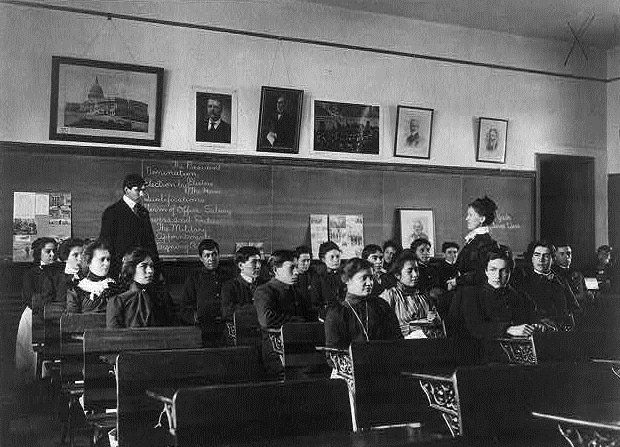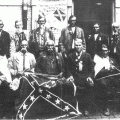
( – promoted by navajo)
The federal election voter guide is now available in the four most commonly spoken Native American/Alaska Native languages: Cherokee, Dakota, Navajo and Yup’ik. These languages are spoken by about 220,500 Americans.
Native American Languages:
Five centuries ago, there were more than 500 distinct Native American languages spoken in North America. With European contact, Native languages began to disappear. The death of these languages was brought about by two basic factors: (1) the death of the people who spoke them, caused by European diseases and deliberate genocide, and (2) the active suppression of Native languages by the American government.
By the 1960s, there were still 175 Indian languages being spoken in the United States and Canada. Of these languages, 136 had fewer than 2,000 speakers and 34 had fewer than 10 speakers. By 2007, it was estimated that only 154 Indian languages were still being spoken and that half of these were spoken only by elders.
At the present time, it estimated that there are 46 Indian languages which are still being spoken by significant numbers of children. Languages which are being learned by children have some chance of survival. A flourishing language is one in which the contact or colonial language is used almost entirely as a second language. In North America only Navajo, Mississippi Choctaw, and some Cree communities fit this definition.
Retention of the native language is an important issue for many tribes. Many Native American communities have language programs to try to teach their languages to children. As a consequence there are on many reservations programs which are intended to maintain the language. In communities in which the children no longer speak the native language, the goal is language revival in which the Indian language is taught as a second language. By 1986 there were 98 language projects involving 55 different Indian languages. There was an enrollment of more than 14,000 students in these programs. By 2006, there were 62 native languages being taught in 101 programs in 24 states and provinces.
In 1990, Congress passed the Native American Languages Act which declared a national policy of respect for Native American languages and encouragement of their continued vitality. In 1997, the Indigenous Language Institute began to put an emphasis on the revitalization of Indian languages, not just their preservation. With new technologies, such as computers, and working with Native communities, languages can be revitalized as a part of daily life.
Navajo:
Navajo (Diné bizaad) is an Athabaskan language which is spoken by more than 140,000 native speakers. Over half of the Navajo speak the language at home and the language is commonly used for everyday communication. Many parents still pass on the Navajo language to their children as a first language.
During World War II, Navajo was used as a code in the Pacific by bilingual code talkers to send military messages over the radio.
While many Navajo still speak their language, a recent survey shows that only 5% of the school-aged children on the reservation speak the language fluently. In an attempt to counter this language loss, many elementary school classes on the reservation are now offering immersion classes in Navajo. One study found that in Window Rock, Arizona, Indian children who began school in Dine (Navajo) and learned English as a second language performed almost two grade levels above their peers who started school in English.
Census data from the Navajo reservation indicate that between 1980 and 1990 the proportion of Navajos aged 5-17 who spoke only English rose from 12% to 28%, and by 2000, the figure reached 43%.
The language most closely related to Navajo is Apache.
Dakota:
There are about 20,355 speakers of Dakota in the United States and Canada. On the Spirit Lake Reservation in North Dakota, there are only 120 fluent speakers out of a tribal population of 4,435. All of the Spirit Lake fluent speakers are elderly. In order to retain the language, people meet in the school gym every other Tuesday for soup and conversation in Dakota.
Cherokee:
Cherokee is an Iroquoian language which is spoken in Oklahoma and in North Carolina. It is estimated that there are between 12,000 and 22,000 fluent speakers. Cherokee is unique among the languages of Native American cultures in North America as it has its own writing system.
Yup’ik:
Yup’ik is an Eskimo-Aleut language which is spoken by about 10,000 Natives in Alaska. Since the mid-1970s, educational programs have been implemented to revive and sustain the language. The University of Alaska Fairbanks offers a bachelors degree in Yup’ik language and culture and in Yup’ik Eskimo, as well as Associates Degrees in Native Language Education, with a concentration in Yup’ik, and in Yup’ik Language Proficiency.

Leave a Reply